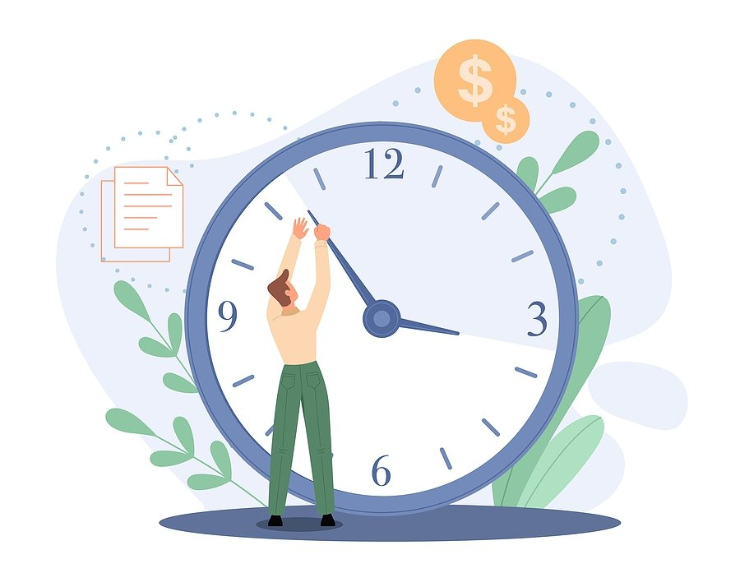
The signal changes in California foreclosure law in 2021 are bearing unexpected fruit: a bankruptcy filing AFTER the foreclosure auction can save the house for the homeowner.
Under CC 2924m, instead of the foreclosure sale being final at the drop of the auction hammer, now the sale is not final, and the trustee’s deed not recordable, for weeks following the sale under fairly common circumstances. The statute is complex and requires careful reading; this article is a general treatment of this complicated new arrangement.
A bankruptcy filing between the auction and recordation finds the homeowner still the record owner, and the house property of the estate, with the possibility of salvaging the situation. What a sea change.
The new law
In an effort to promote homeownership, the California legislature in 2020 carved out exceptions to the prior law that a foreclosure sale was final upon the acceptance of the highest bid at a public auction. Now, the sale is immediately final only if the winning bidder was a prospective owner-occupant, who files the required affidavit, defined in CC 2924m(a)(1).
But, if the winning bidder was not an prospective owner-occupant, a 15 day window is opened in which an eligible tenant-buyer or an eligible bidder may lodge a bid or notice of intent to bid. Eligible bidder is defined in CC 2924(m)(3), essentially non-profits, public entities, and the University of California. If neither bid nor notice is received in the 15 day period, the foreclosure becomes final.
If during that 15 day period, a tenant matches or overids the high bid at the foreclosure auction, the tenant vests as the owner and a trustee’s deed issues.
If no tenant bids or gives notice within the 15 days, a further window opens for an additional 30 days from the original sale, in which an eligible bidder can overbid the winning bid at auction. The highest bidder becomes the owner as of 5 p.m. on the 45th day, with no provision that finality relates back.
The first bankruptcy case
The bankruptcy effect of the new foreclosure scheme was first seen in a reported case in Hager, in the Eastern District of California.
The issue came before the court in the context of a motion to annul the stay. The highest bidder at the foreclosure was not a prospective owner-occupant and multiple parties filed notices of intent to bid within the 15 day window. The homeowner filed Chapter 13 21 days after the foreclosure, while the 45 day window was open. The auction winner recorded its deed after the bankruptcy was commenced and before the expiration of the 45 day window.
After a delination of the new statutory bidding structure, Judge Lastreto held that the sale was void as violating the automatic stay. “Finalizing the sale on or after [commencement of the bankruptcy] violates the stay. Any violation of the stay is void and without effect. ” In re Hager, No. 22-12056-B-13, at *13 (Bankr. E.D. Cal. June 26, 2023).
The case contains an extended discussion of the distinction between finality and perfection, not central to this article. See also Ford, on relation back after expiration of 45 day period.
Bankruptcy opportunities
Up to this point, California bankruptcy practitioners have just faced the client with the foreclosure sale scheduled within days (or, God forbid, hours). Now, when the facts are right, there appears an opportunity to save a house after the auction.
The first gating fact is that the winning bidder at auction must not be a prospective owner-occupant. If the winning bidder is a prospective owner-occupant who files the affidavit required by CC 2924(m)(c)(1) within 48 hours of the sale, it’s game over, assuming the trustee’s deed is recorded within the statutory look back period.
If within the 15 day period, eligible parties file notices of intent to bid, the window is extended to 45 days, and the sale is still not final.
Then, if the 15 day window has run, we need to know if tenant buyers or eligible bidders filed the appropriate notices, extending the window further.
How do we know
CC 2924m requires posting information about foreclosure sales that are not final on the web.
(d) If the conditions set forth in paragraph (1) of subdivision (c) for a sale to be deemed final are not met, then:
(1) Not later than 48 hours after the trustee’s sale of property under Section 2924g, the trustee or an authorized agent shall post on the internet website set forth on the notice of sale, as required under paragraph (8) of subdivision (b) of section 2924f, the following information:
(A) The date on which the trustee’s sale took place.
(B) The amount of the last and highest bid at the trustee’s sale.
(C) An address at which the trustee can receive documents sent by United States mail and by a method of delivery providing for overnight delivery.
(2) The information required to be posted on the internet website under paragraph (1) shall also be made available not later than 48 hours after the trustee’s sale of property under section 2924g by calling the telephone number set forth on the notice of sale as required under paragraph (8) of subdivision (b) of section 2924f.
(3) The information required to be provided under paragraphs (1) and (2) shall be made available using the file number assigned to the case that is set forth on the notice of sale as required under paragraph (8) of subdivision (b) of section 2924f. ( That’s the T.S. number on the notice of sale.)
(4) The information required to be provided under paragraphs (1) and (2) shall be made available for a period of not less than 45 days after the sale of property under section 2924g.
So, the information a practitioner needs should be readily available.
Another war story
Only months after Hager, I had a client who first contacted me a week after the foreclosure sale. We immediately filed a Chapter 13 within the 15 day window and gave notice to the foreclosure trustee.
Astoundingly, the foreclosure trustee agreed without argument that the sale was void and returned the third party bidder’s check and notified the eligible bidders that the sale was rescinded.
The data base is too small today to know which approach the foreclosure industry will take to the new world of California foreclosure law.
It’s up to bankruptcy practitioners to get the word out to all concerned about the opportunities presented by the new law. I’ve generalized the definitions and details of the statute in this post for the sake of easier reading. Careful reading of the statute, followed by prompt action, can save homes for families.







